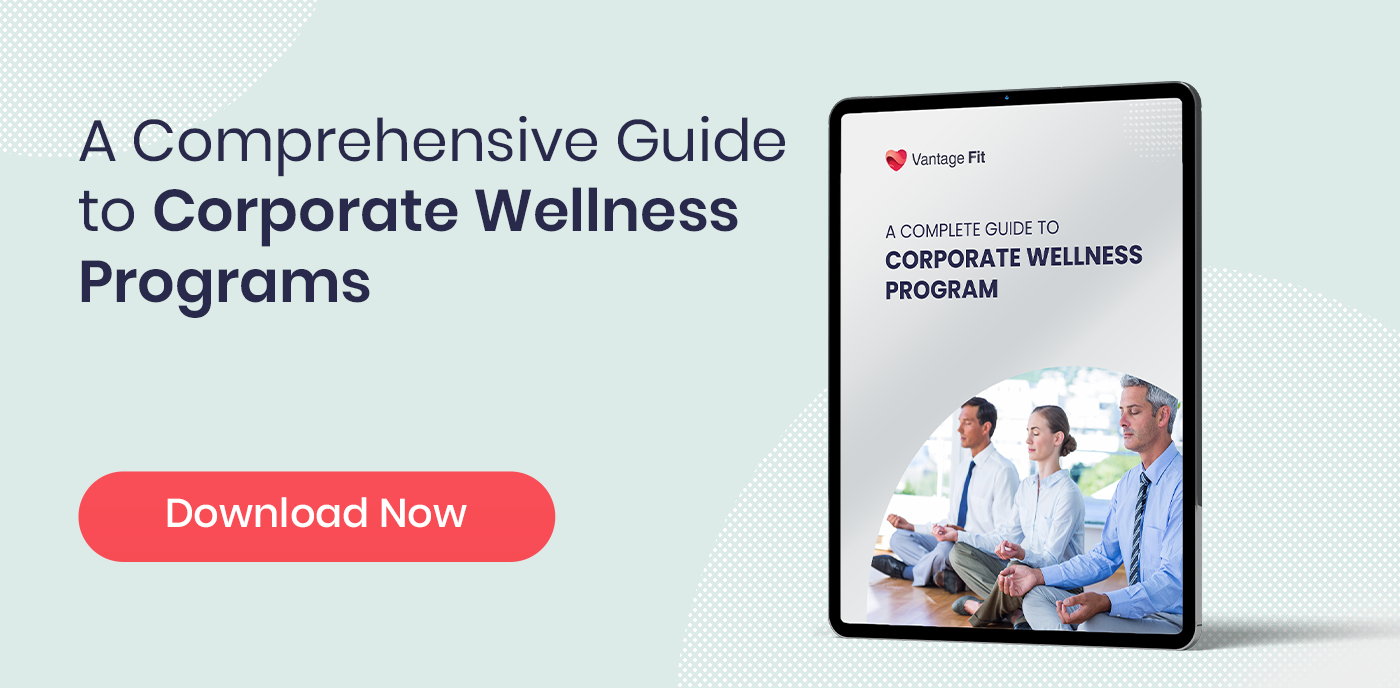Employee Health: Meaning, Importance & Strategies to Improve it
As an employer, you’ve heard/said it countless times: employee health matters. But when an employee gets feverish/ mentally unwell in the office, suddenly everyone’s on edge. The stress to keep up with deadlines makes one flounder. You tell your team to stay home when sick, but the reality is far from that simple.
Despite official policies, the work doesn’t stop when someone’s under the weather! Emails still need to be sent, meetings still happen, and the pressure to “power through” persists. So, what is your company really doing about employee health—beyond conducting multiple webinars on mindfulness or hosting annual sports weeks?
Inside this blog, you’ll get the quick lowdown on what employee health really means, why it’s the lever for boosting productivity and morale, and which strategies actually work in modern workplaces. Expect a blend of sharp stats, real-world examples, and practical tips tailored for people who want to practice what they preach!
If you're ready to move beyond quick fixes and turn well-being into your team’s greatest advantage, you’re in the right place.
What is Employee Health ?

Employee health captures the full spectrum of physical, mental, and emotional well-being that individuals bring to work each day. Far more than just avoiding illness, it reflects daily habits, stress management, resilience, and the ability to contribute meaningfully at work. A thriving workforce’s foundation lies in intentional employee health management.
Responsibility for employee health management typically rests with HR, who act as architects of the workplace environment. Rather than simply enforcing policies, HR professionals shape the culture by designing wellness programs, advocating for preventive care, and ensuring psychological safety.
They champion initiatives that support everything from flexible schedules to mental health resources, always adapting strategies based on real employee feedback.
Through proactive communication, regular health risk assessments, and targeted education, human resources transform well-being from a corporate checkbox into a living, breathing part of daily work life. When HR leads with empathy and strategy, employee health becomes a catalyst for engagement, retention, and organizational success.
The Cost of Poor Employee Health
Ask any employer about the financial toll of poor employee health, and the numbers quickly become staggering.
Each year, US businesses lose about $575 billion due to illness-related absences, underperformance, and rising healthcare expenses. This is a figure that rivals the combined annual revenues of Apple, Amazon, Microsoft, Netflix, eBay, and Adobe.
Can you imagine?
Every missed workday adds up. Unhealthy employees are absent nearly 978 million days a year because of illness, and another 540 million days are lost to presenteeism—when people show up but can’t perform at their best due to chronic conditions or stress. Altogether, that’s around 1.5 billion days of lost productivity annually.
Healthcare spending is only part of the story. For every dollar employers invest in health benefits, another 61 cents is lost to productivity decline tied to poor health. Businesses already spend roughly $950 billion on health benefits for workers and their families, yet the indirect costs of lost work and underperformance push the total burden even higher.
Moreover, mental health struggles alone result in nearly $47.6 billion in lost productivity annually. Workers with poor mental health are absent almost five times more than their peers.
Zoom in on a single organization, and the impact becomes just as clear. A company with 1,000 employees can expect to lose millions annually to burnout, turnover, and health-related absences!
These figures are a reflection of lost opportunities, strained teams, and mounting costs that every employer feels. It’s a business challenge that demands attention, investment, and action!
Brian Gifford, director of research and analytics at IBI says,
It’s critical that employers understand how strategies for managing healthcare spend — such as cost- shifting to employees or ensuring better access and more cost-effective care — can impact the kinds of conditions that drive illness-related lost productivity.
Benefits of Maintaining Good Employee Health in the Workplace

Investing in employee health is one of the smartest business decisions organizations can make. Here's how maintaining good employee health transforms the workplace:
- Higher Productivity and Performance
Healthy employees consistently outperform their peers. Companies with strong health cultures see up to 21% increases in productivity, while a research by Oxford University shows that employees are 13% more productive when they feel well. When people have the physical energy and mental clarity that comes with good health, they bring more focus and creativity to their work.
- Significant Reduction in Absenteeism
Good employee health directly translates to better attendance. Organizations prioritizing health report 25-27% reductions in absenteeism, with some employees taking 4.8 fewer sick days annually. WHO research confirms that employee health initiatives can reduce sick leave absenteeism by 27%.
- Improved Employee Retention
Health-focused workplaces keep talent longer. Research shows 90% of employees intend to stay when their well-being needs are met, while 87% consider health offerings when choosing employers. Better retention means lower recruitment costs and more stable, experienced teams.
- Substantial Healthcare Cost Savings
Prevention pays dividends. WHO data shows companies can reduce healthcare costs by 26% through employee health initiatives. Studies demonstrate returns ranging from $2.71 to $5.81 for every dollar invested in employee health, with some organizations achieving savings of $670 per employee annually through targeted health programs.
- Enhanced Employee Engagement

Healthy employees are more engaged employees. Research indicates that 91% of employees believe they're motivated to do their best when executives support well-being initiatives, while companies with strong health cultures see significantly higher work engagement scores.
- Stronger Employer Brand
Health benefits attract top talent. 87% of employees expect health and wellness support from employers, making comprehensive health programs a competitive advantage in recruitment. Organizations known for caring about employee health become magnets for skilled professionals.
- Better Mental Health

With 43% of employees suffering from depression and workplace stress costing businesses billions, mental health support is crucial. Comprehensive health programs can reduce employee stress by 25-43%, leading to happier, more resilient teams.
- Positive Company Culture and Morale
Health-focused workplaces create environments where people feel valued. Strong workplace cultures of health are associated with higher work engagement and lower employee stress and depression, creating positive ripple effects throughout the organization.
- Long-term Competitive Advantage
Healthy workforces generate fewer health costs and higher productivity, while companies with happy, healthy employees prove more profitable than competitors. This creates sustainable competitive advantages that compound over time.
Why Health Insurance Alone Isn’t Enough
Employer-sponsored insurance (ESI) is considered a critical recruitment and retention tool and a highly valued benefit for firms. However, relying solely on providing health insurance to employees is often not sufficient to truly address their complete healthcare needs and overall financial well-being. This is due to several interconnected challenges:
Escalating Costs for Employees:
ESI premiums have consistently risen faster than inflation and wage growth over the past decade, creating financial strain for employees.
Employees bear a relatively constant share of these premiums, typically around 20% on average for single coverage and 32% for family coverage. This burden is disproportionately higher for lower-income employees, who on average contribute a greater share of their income and pay more in absolute dollars towards premiums.
For instance, a lowest-paid employee might need to work nearly 10 hours to cover their monthly premium contribution, compared to 2.5 hours for a highest-paid employee.
Subsequently, health insurance is also the second-largest compensation cost for employers after wages and salary.
Increased Employee Cost-Sharing and Underinsurance:
ESI plans are increasingly requiring employees to pay a deductible, with the percentage of plans with a deductible rising from 78% in 2010 to 89% in 2021. The average deductible for single coverage nearly doubled from $1,025 in 2010 to $2,004 in 2021, and can be higher for small firm employees.
While high-deductible health plans (HDHPs) offer lower monthly premiums, their large deductibles can discourage employees from seeking necessary care before benefits commence. This has led to nearly 1 in 3 people (29%) with ESI being considered "underinsured" in 2022, meaning their out-of-pocket costs were unaffordable.
Consequently, 33% of ESI-covered individuals postponed needed care due to cost, and 18% did not fill or rationed prescriptions. Over a quarter (27%) also reported problems paying medical bills, leading to cutting back on other spending or incurring debt.
Employers are also now concerned that employees have reached the maximum share of health costs they can afford, with some consultancies observing that cost-shifting "seems to be off the table for many employers" in 2021.
Firms' Struggles with High Healthcare Prices:
The primary driver of rising ESI costs is the high price of healthcare, rather than increased utilisation; approximately two-thirds of per-person spending growth from 2015-2019 is attributed to rising prices.
Private insurance plans, on average, pay 224% of Medicare rates for hospital services, directly contributing to higher insurance costs. Despite their size, even very large employers often lack sufficient market power to negotiate fair prices from health systems, particularly as provider markets become more concentrated.
While various tactics have been employed (e.g., increasing employee contributions, raising deductibles), these strategies have limited impact on the fundamental problem: persistently high prices for care. This has led nearly 9 in 10 business leaders to believe that the cost of providing health benefits will be "unsustainable" in the next five to 10 years.
Coverage Alone Doesn’t Improve Overall Health
Good health depends on more than just having coverage.
Studies show that simply having insurance doesn’t guarantee better health outcomes. Access to care is only one piece of the puzzle—lifestyle, preventive programs, and workplace support play a much bigger role in long-term well-being.
Health insurance contributes just 10–20% to overall health outcomes, while factors like healthy behaviors and supportive environments matter much more.
Budgeting Mistakes that kills Employee Health Plans
A common budgeting mistake that can quietly undermine employee health plans is separating fixed operating costs from claims.
Many organizations track health plan claims—the money paid out for employee care—apart from fixed expenses like benefits staff, consultant fees, carrier charges, and stop-loss premiums. Fixed costs often end up buried in the broader HR budget, making it difficult to see the health plan’s true financial performance.
Carriers and vendors are well aware that employers scrutinize fixed fees more than claims data, so they often hide extra revenue in claims, such as pharmacy rebates or telemedicine visit fees. As a result, it becomes challenging to pinpoint where money is actually going.
When you don’t integrate all operating expenses into the health plan budget, you lose the ability to measure and improve the plan’s overall financial health. You can’t fix what you can’t see.
This perpetuates a fee-for-service model that doesn’t reward smarter spending or real savings.
In contrast, some leading organizations have found success by treating their health plan as a business within the business—combining all costs, tracking total operating income or loss, and even tying leadership bonuses to this comprehensive figure.
For example, a Fortune 100 company managed to keep its health plan costs flat for nearly two decades by investing in high-impact initiatives like on-site clinics. These investments increased fixed costs but led to even greater reductions in claims, improving the plan’s overall financial performance.
If you want real control over your employee health plan, start by bringing every operating expense into a single, transparent budget. Only then can you make strategic decisions, achieve genuine savings, and build a sustainable plan that truly supports your people.
How to Improve Employee Health?
In the previous section, we learned about the benefits of good employee health, now let’s see how we can put it into action:
Implement a Holistic Wellness Program
Start with programs that address your employees' complete well-being. 72% of employers see reduced healthcare costs with comprehensive wellness initiatives. Focus on combining physical fitness, mental health support, nutrition education, and stress management rather than isolated programs. Your employees need integrated support, not scattered efforts.
Why not give Vantage Fit a go? Our wellness intelligence platform has helped many companies make significant strides in the employee health domain.
Learn the Unique Needs of Employees of all Genders
Recognize that health challenges differ. Women face higher rates of musculoskeletal disorders and work-life balance pressures, while men experience more workplace accidents and mental health stigma.
Design inclusive programs that address reproductive health, menopause support, and mental health resources without creating exclusion.
Focus on Mental Health

With 71% of American adults reporting mental health issues like stress and anxiety, mental health support is essential. Provide confidential counseling services, stress management workshops, and create psychologically safe environments where employees feel comfortable seeking help. Depression alone costs employers billions in lost productivity.
Encourage Regular Exercise in Your Organization

Physical activity programs deliver strong returns. Offer on-site fitness facilities, subsidized gym memberships, or simple initiatives like walking groups and stretching breaks. Even flash walks encouraging movement every hour can reduce sitting time and boost energy levels.
Encourage Preventative Health Care
Prevention saves money and lives. Provide regular health screenings, vaccinations, and check-ups. Give employees flexible time for preventive appointments and educate them that using their health benefits for regular check-ups actually reduces long-term costs and health risks.
Make Healthy Eating Easy

Support good nutrition through healthy cafeteria options, nutritious vending machines, and nutrition workshops. Partner with nutritionists to design balanced meal options and provide education about healthy eating habits. Simple changes like offering fruit and implementing healthy food challenges can shift workplace eating culture.
Encourage Work-Life Balance
Flexibility reduces stress and improves performance. 97% of employees report improved quality of life with flexible schedules. Offer flexible hours, remote work options, compressed workweeks, and ensure employees can truly disconnect after hours. Set clear boundaries between work time and personal time.
Provide an Employee Assistance Program
EAPs offer crucial confidential support for personal and work challenges. These programs address substance abuse, financial issues, mental health problems, and family struggles. Effective EAPs help employees before problems escalate into larger issues affecting work performance.
Offer a Flexible Work Schedule
Schedule flexibility reduces fatigue, musculoskeletal pain, and psychological distress. Allow employees to adjust start times, work from home, or choose compressed schedules based on their personal needs and peak productivity hours. This autonomy makes employees feel valued and trusted.
Leverage Wellness Committees
Employee-led committees dramatically increase program success. These committees provide employee ownership and bottom-up wellness culture. Include 3-12 diverse employees representing different departments to ensure comprehensive program planning and authentic employee buy-in.
Provide Health Education

Knowledge empowers better decisions. Offer workshops on nutrition, stress management, ergonomics, and disease prevention. Bring in healthcare professionals for screenings and educational sessions. Cover topics like healthy eating habits, regular exercise importance, and sleep quality strategies.
Equip Your Employees with Tools to Handle Workplace Pressures Effectively
Teach practical stress management skills. Provide mindfulness training, time management workshops, and conflict resolution resources. Focus on breathing techniques, effective communication, and boundary-setting strategies. Create supportive workplace cultures that emphasize recognition over toxic competition.
Offer Financial Guidance
Financial stress significantly impacts health. 34% of employees report financial issues affect their mental health. Implement financial wellness programs combining financial literacy education with practical competency training. Offer retirement planning, debt management resources, and emergency financial assistance.
Incentivize Healthy Behaviors

Well-designed incentives boost participation. Companies using health incentives report higher engagement in wellness programs. Offer rewards like gift cards, extra time off, or fitness reimbursements for achieving health goals. Create team-based challenges to make wellness social and enjoyable.
Your next step? Start with 2-3 initiatives that fit your budget and culture. Measure their impact, gather employee feedback, and gradually build a comprehensive health program that becomes part of your workplace DNA.
Remember: small, consistent steps create lasting change. One small step at a time.
Elevate your Employee’s Health with Vantage Fit

Trusted by 100+ Organizations Globally including Tata Motors, Landmark Group, and companies across 24 countries, Vantage Fit can be your ultimate strategic partner in building a healthier, more engaged workforce that delivers results you can track.
Proven Results from Real Organizations:
- 97% participation in POSCO Walkathon.
- 34% increase in average activity levels among 5,000+ Landmark Group employees.
- Over 1 million steps completed by DLA+ in Winter Step Challenge.
Why Leading Companies Choose Vantage Fit:
✓ AI-Powered Tracking: Advanced squat detection, vehicle recognition for authentic activity monitoring
✓ Enterprise-Grade Security: HIPAA certified, ISO 27001 & 27701 compliant, GDPR-ready
✓ Seamless Integration: Works with all major wearables and health apps
✓ Comprehensive Wellness: Step tracking, heart rate monitoring, mood tracking, meditation, nutrition guidance
✓ Gamified Engagement: Real-time leaderboards, team challenges, reward systems that keep employees motivated
What Our Clients Say:
Vantage Fit is an incredible product. I've been using it in the business now for four months and the results have been incredible for us as a business. We've had employees come up to us individually saying 'I'm drinking so much more water every day,' 'I'm doing my meditation sessions in the evening,' 'I'm doing self-affirmations in the morning before work'—it gives them that positive start to the day.
-Matt Whitemore, Managing Partner, BWC Real Estate
Join the wellness revolution that's transforming workplaces globally. Because when your people thrive, your business thrives.
Ready to implement employee health strategies?
Frequently Asked Questions on Employee Health
What is a healthy employee?
A healthy employee is someone who maintains complete physical, mental, and emotional well-being in the workplace. They demonstrate strong resilience, are more productive, and contribute positively to team dynamics while maintaining good lifestyle habits both at work and in their personal lives.
What is the difference between employee health & occupational health?
Occupational health focuses specifically on protecting workers from workplace hazards, injuries, illnesses, and safety risks through regulations and preventive measures.
Employee health is a broader concept encompassing the complete physical, mental, and emotional well-being of individuals, including lifestyle factors, stress management, and overall quality of life both at work and beyond.
While occupational health prevents harm, employee health promotes overall wellness and thriving.
What is the role of wellness challenges in improving employee health?
Wellness challenges play a crucial role by promoting physical activity, reducing sedentary behavior, and boosting mental well-being through endorphin release. They also provide motivation through gamification and peer support, making wellness fun and accessible while addressing common employee health issues like stress and inactivity.
Why is employee health screening important in the workplace?
Employee health screenings enable early detection of health conditions before symptoms appear, allowing for quicker intervention and preventing conditions from worsening.
What is an employee health policy?
An employee health policy is a formal statement outlining an organization's commitment to maintaining a safe and healthy workplace. It establishes guidelines, procedures, and responsibilities for protecting employees from workplace hazards while ensuring their well-being.
What is employee health management software and how does it benefit organizations?
Employee Health Management Software is a centralized digital platform that helps employers track, monitor, and improve workforce well-being. It has features like health data logging, risk assessments, automated program management, wearable integration, and real-time analytics.




